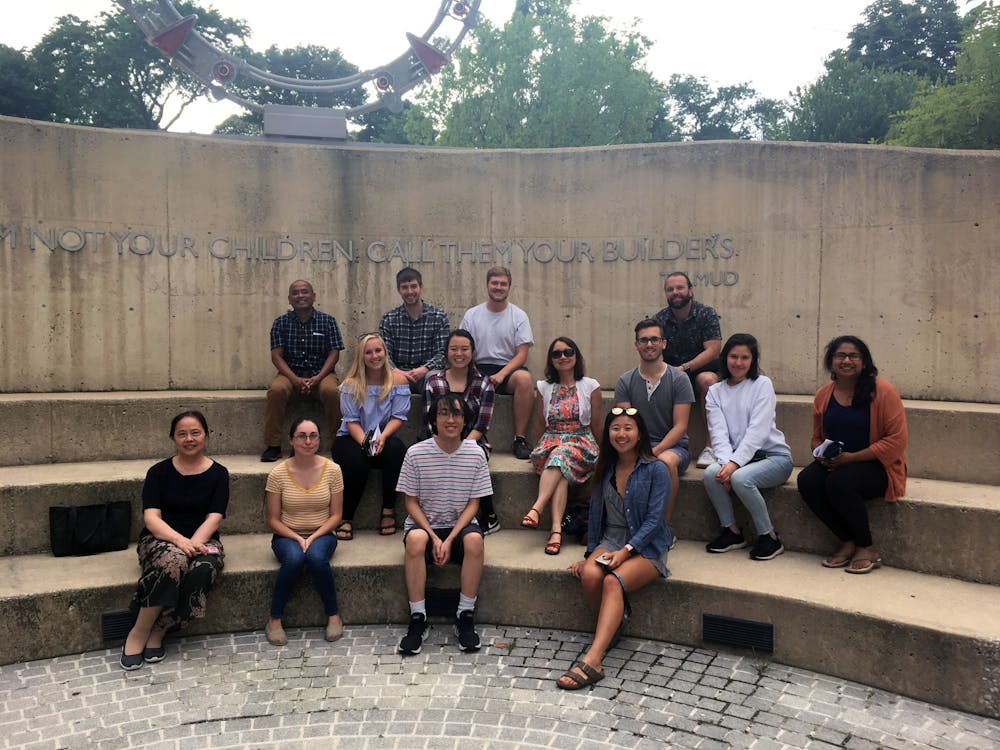When she is not giving lectures in Epigenetics, Associate Professor of Biology Xin Chen can be found in her laboratory making strides to solve the many mysteries that still exist in the field of epigenetics.
In an email to The News-Letter, Chen offered her explanation of the field of epigenetics.
“A broad definition of epigenetic mechanisms refers to DNA-associated factors that change gene expression without altering the primary DNA sequences,” she said.
She and her collaborators aim to analyze the interplay between genetic and epigenetic mechanisms that allow for proper gene expression in spermatogenesis.
With the Drosophila male germ line as a model system, Chen’s research strives to answer a number of fundamental questions, such as: Are there genes with stem cell-specific expression? How do the transcription and chromatin landscape change in continuously differentiating germ cells during normal development?
Chen explained how she would describe her work to those unfamiliar with the field of epigenetics.
“We are trying to understand how cells could become different in multicellular organisms, such as human beings. [There are] two fundamental processes in biology: DNA replication followed by cell division can elegantly explain how one mother cell gives rise to two IDENTICAL daughter cells,” Chen wrote. “However, in the development and maintenance of multicellular organisms, if this is the only mode, we will only get a lump of undifferentiated cells, very much like a tumor.”
Prior to her time at Hopkins, Chen did postdoctoral work at the Stanford University School of Medicine, where she studied the role of Polycomb group proteins in regulating the cellular differentiation program. She explained how this work fueled her passion for the field.
“Among known epigenetic regulators, the Polycomb group transcriptional repressive proteins have critical functions in multiple stem cell lineages across different species from Drosophila to mammals,” Chen wrote.
Her lab has primarily focused on epigenetic inheritance during germline stem cell (GSC) asymmetric cell division. Chen emphasized two important concepts to keep in mind when considering GSC asymmetric cell division.
“First, DNA replication has an underappreciated role in establishing epigenome [differentiality]; second, cell division is regulated in a polarized manner to lead to distinct daughter cells,” she wrote.
Chen’s lab made the discovery that during the asymmetric division of Drosophila GSC, the preexisting histone 3 are selectively segregated to the renewed stem cell daughter cells in contrast to more newly synthesized histones which are enriched in the differentiating daughter cells. Histone 3 inheritance takes place solely in GSCs and will be lost if the cells are manipulated to divide symmetrically, therefore it may contribute to the epigenetic memory of stem cells.
In the future, the lab seeks to answer questions that further this conclusion, including: What is the molecular mechanism and cellular basis underlying asymmetric segregation pattern of Histone 3?
In the last week of October, Chen shared her research in a talk hosted by the Hopkins chapter of TriBeta, a national professional and honor society of the biological sciences. The talk was titled “Asymmetry from symmetry or symmetry from asymmetry?” and focused on GSC asymmetric cell division.
Chen’s advice to students is to avoid approaching research with an already established end result.
“I just want to encourage students to stay open-minded when doing research and let the data/cells teach you how they work at their physiological conditions, or called in vivo conditions,” Chen wrote.
Alice He, a senior majoring in Molecular and Cellular Biology who has had Chen as a professor, explained that Chen exemplifies both the difficulties and beauty of scientific work.
“All research takes time and patience, but the end results are worthwhile… [Chen] has spent a lot of time working with her students… and with all of the work that she and her students have put in, you can finally see a logical picture of what happens,” she said.





